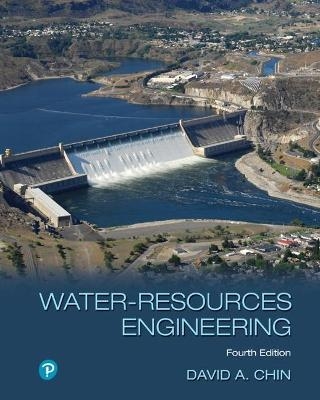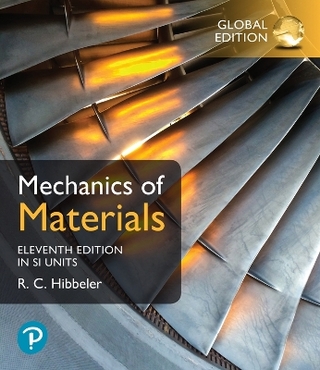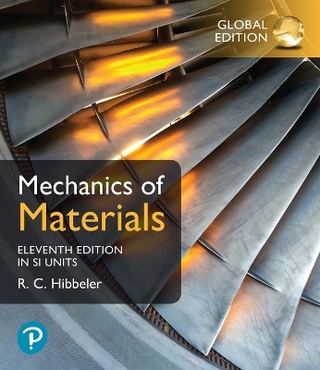
Pearson eText for Water-Resources Engineering -- Access Card
Pearson (Hersteller)
978-0-13-535770-5 (ISBN)
Pearson eText is an easy-to-use digital textbook that instructors can assign for their course. The mobile app lets you keep on learning, no matter where your day takes you — even when you're offline. You can also add highlights, bookmarks, and notes in your Pearson eText to study how you like.
NOTE: You are purchasing an access card only. Pearson eText is a fully digital delivery of Pearson content. Before purchasing, check with your instructor to confirm the correct ISBN. To register for and use Pearson eText, you may also need a course invite link, which your instructor will provide. Follow the instructions provided on the access card to learn more.
1. Introduction
1.1 Water-Resources Engineering
1.2 The Hydrologic Cycle
1.3 Design of Water-Resource Systems
1.4 Types of Water-Resource Systems
2. Fundamentals of Flow in Closed Conduits
2.1 Introduction
2.2 Single Pipelines
2.3 Water Hammer
2.4 Pipe Networks
2.5 Pumps
3. Design of Water-Distribution Systems
3.1 Introduction
3.2 Water Demand
3.3 Components of Water-Distribution Systems
3.4 Performance Criteria for Water-Distribution Systems
3.5 Building Water-Supply Systems
4. Fundamentals of Flow in Open Channels
4.1 Introduction
4.2 Basic Principles
4.3 Water-Surface Profiles
5. Design of Drainage Channels
5.1 Introduction
5.2 Basic Principles
5.3 Design of Channels with Rigid Linings
5.4 Design of Channels with Flexible Linings
5.5 Composite Linings
5.6 Scour at Bridges
6. Design of Sanitary Sewers
6.1 Introduction
6.2 Quantity of Wastewater
6.3 Hydraulics of Sewers
6.4 System Design Criteria
6.5 Design Computations
7. Design of Hydraulic Structures
7.1 Introduction
7.2 Culverts
7.3 Gates
7.4 Weirs
7.5 Spillways
7.6 Stilling Basins
7.7 Dams and Reservoirs
7.8 Hydropower
8. Probability and Statistics in Water-Resources Engineering
8.1 Introduction
8.2 Probability Distributions
8.3 Analysis of Hydrologic Data
8.4 Uncertainty Analysis
9. Fundamentals of Surface-Water Hydrology I: Rainfall and Abstractions
9.1 Introduction
9.2 Rainfall
9.3 Rainfall Abstractions
9.4 Baseflow
10. Fundamentals of Surface-Water Hydrology II: Runoff
10.1 Introduction
10.2 Basic Considerations
10.3 Time of Concentration
10.4 Peak-Runoff Models
10.5 Continuous-Runoff Models
10.6 Routing Models
10.7 Water-Quality Models
11. Design of Stormwater-Collection Systems
11.1 Introduction
11.2 Street Gutters
11.3 Inlets
11.4 Roadside Channels
11.5 Storm Sewers
12. Design of Stormwater-Management Systems
12.1 Introduction
12.2 Performance Goals
12.3 Site Planning and Design
12.4 Storage Impoundments
12.5 Stormwater Wetlands
12.6 Infiltration Basins
12.7 Swales
12.8 Vegetated Filter Strips
12.9 Bioretention Cells
12.10 Green Roofs
12.11 Permeable Pavements
12.12 Exfiltration Trenches
12.13 Subsurface Exfiltration Galleries
12.14 Drainage Wells
12.15 Selection of SCMs for Water-Quality Control
12.16 Major Drainage System
13. Evapotranspiration
13.1 Introduction
13.2 Penman—Monteith Equation
13.3 Application of the PM Equation
13.4 Potential Evapotranspiration
13.5 Reference Evapotranspiration
13.6 Actual Evapotranspiration
13.7 Selection of ET Estimation Method
14. Fundamentals of Groundwater Hydrology I: Governing Equations
14.1 Introduction
14.2 The Subsurface Environment
14.3 Darcy’s Law
14.4 Hydraulic Conductivity
14.5 Governing Equation
14.6 Two-Dimensional Approximations
14.7 Flow in the Unsaturated Zone
15. Fundamentals of Groundwater Hydrology II: Applications
15.1 Introduction
15.2 Steady-State Solutions
15.3 Unsteady-State Solutions
15.4 Principle of Superposition
15.5 Method of Images
15.6 Saltwater Intrusion
16. Design of Groundwater Systems
16.1 Introduction
16.2 Design of Wellfields
16.3 Wellhead Protection
16.4 Design and Construction of Water-Supply Wells
16.5 Assessment of Well Performance
16.6 Design of Slug Tests
16.7 Design of Steady-Flow Exfiltration Trenches
16.8 Seepage Meters
17. Water-Resources Planning
17.1 Introduction
17.2 Planning Process
17.3 Economic Feasibility
Appendix A: Units and Conversion Factors Appendix B: Fluid Properties Appendix C: Statistical Tables
Appendix D: Special Functions
Appendix E: Pipe Specifications
Appendix F: Unified Soil Classification System
| Erscheint lt. Verlag | 28.9.2020 |
|---|---|
| Sprache | englisch |
| Themenwelt | Technik ► Maschinenbau |
| ISBN-10 | 0-13-535770-5 / 0135357705 |
| ISBN-13 | 978-0-13-535770-5 / 9780135357705 |
| Zustand | Neuware |
| Haben Sie eine Frage zum Produkt? |
aus dem Bereich

